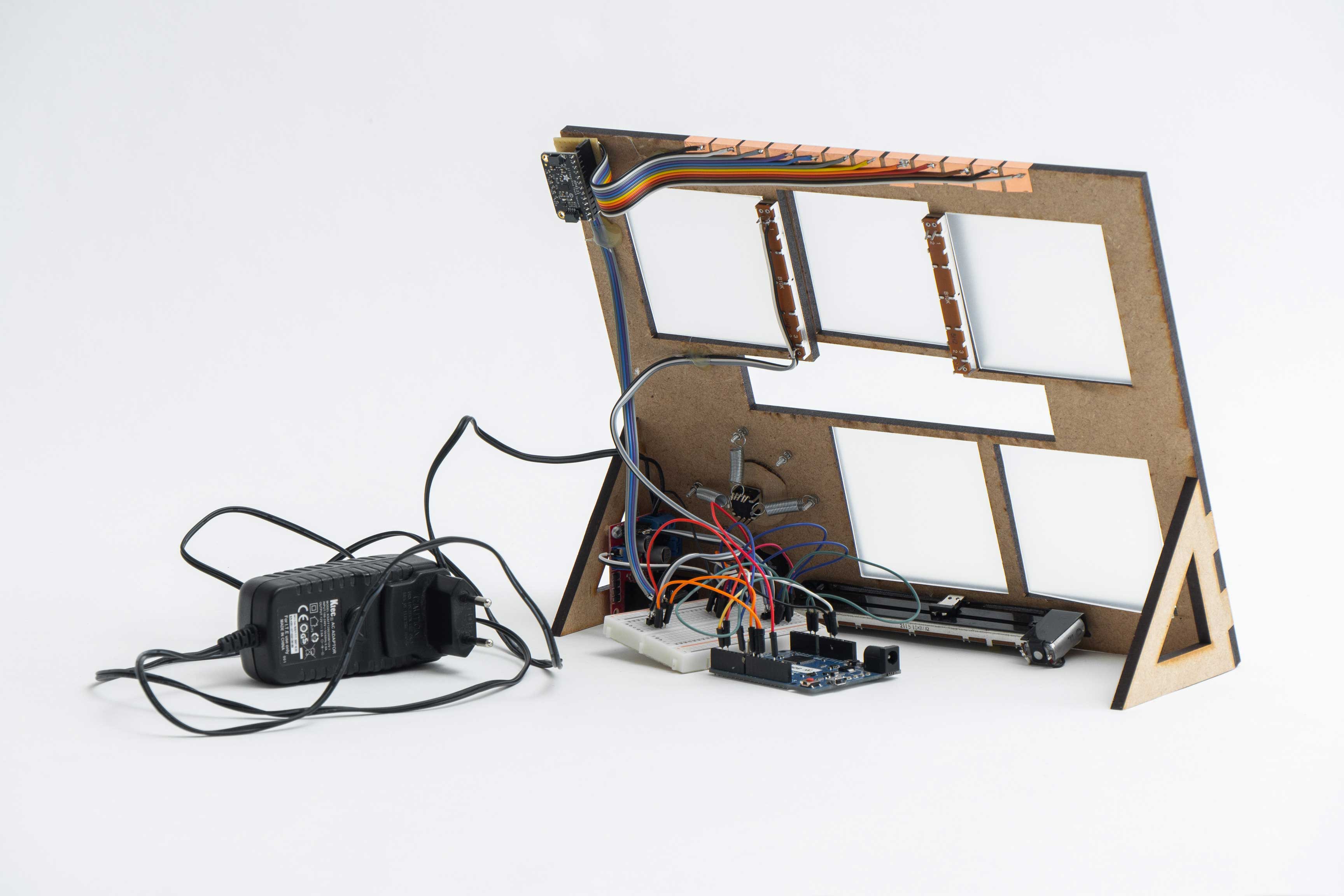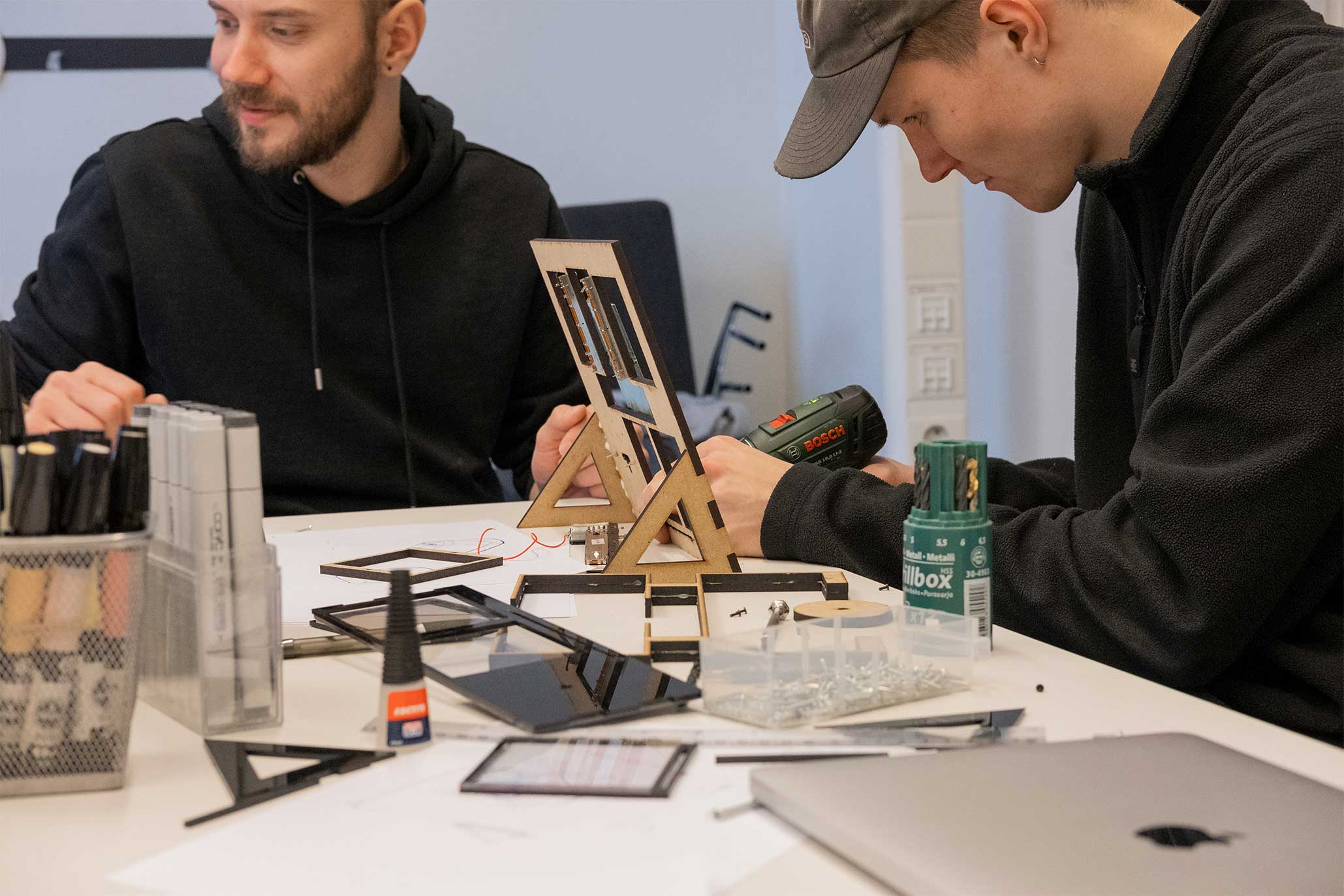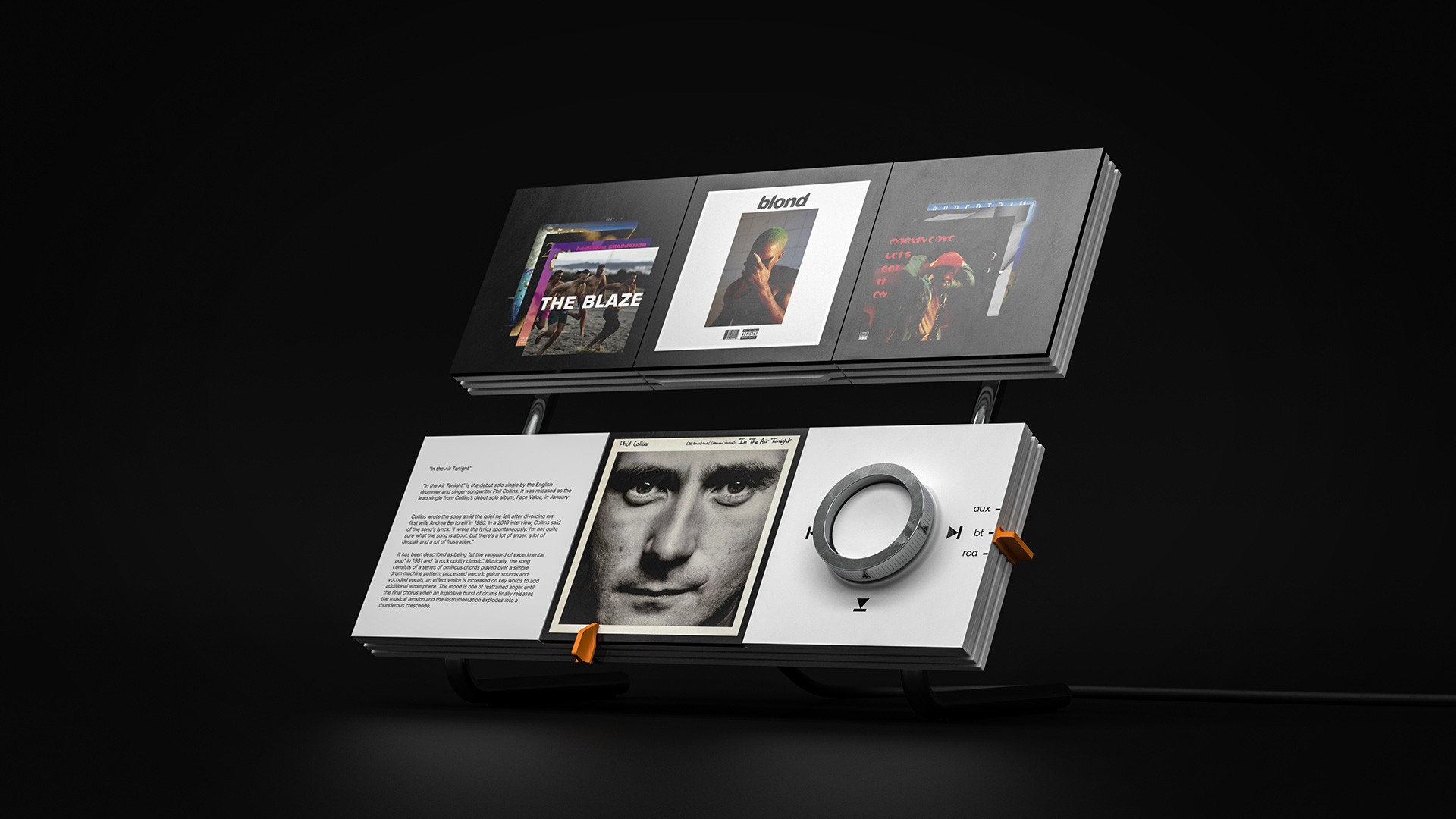With any song in the world just a click away, modern music listening has imperceptibly turned into thoughtless consumption, lacking excitement or eagerness in its process. A tangible interface that brings back the analogue process of experiencing music will foster not only a deeper engagement with our music collection but also the anticipation of putting on your favourite melodies. With an interdisciplinary team of interaction and industrial designers, Kay van den Aker, Oscar Olsson, Emile Chuffart and Tobias Ertel breathe life into their interactive sound design project ‘Tiles’ that brilliantly tackles this absence of character with a hands-on and experience-oriented prototyping focus. “Music is currently consumed instead of enjoyed, streaming apps lack the suspense of putting on a banger,” says the design team “Tiles aspires to connect people to each other and to their digital music collection,” they share.


From the process of building a record collection to the act of putting on a track, the analogue process of listening to music keeps the user immersed in the memorable experience. The digital experience’s unequivocal convenience is both a boon and a bane, since it loses engagement and character due to it being too streamlined and efficient. “We wanted to explore how a tangible interface in combination with artificial sounds could convey the message of music listening as the sophisticated and social process it was intended to be,” share the Sweden based designers.


Designed as a project for the Umeå Institute of Design, the minimal design is divided into two parts. The top half of the ensemble displays the user's music library, featuring an array of captivating cover art. The bottom half, on the other hand, is the player. By pressing down on the top display area, a song can be mechanically inserted into the lower portion of the device as you scroll through the playlist. The left part of the screen communicates the details of the current album using an E-Ink display whereas, the dial on the right allows adjustment of volume and other playback controls. Using the buttons on the top right corner, the user can conveniently filter between song, album, artist and playlist that build the playlist.


The black box in modern technology conceals away what goes on behind the interface and leaves no space for user interaction. The music design lays due emphasis on the albums, their artworks and details, contrary to what is seen in and consumed from contemporary music streaming apps. ‘Tiles’ reimagines the way people experience music with exemplary interaction design that changes the way a physical interface is perceived. Reinstating the analogue way, ‘Tiles’ urges the users to relish their music and not merely consume it.






 Sign in with email
Sign in with email










What do you think?